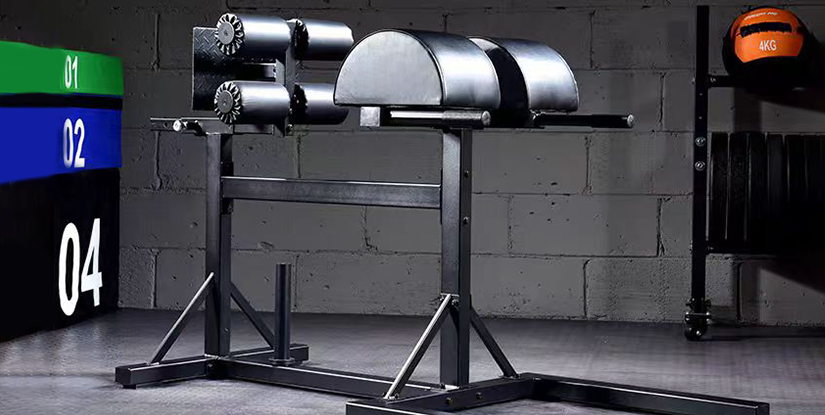Rope Pull Downs: Technique, Benefits, Variations & Programming

Overview
Rope pull downs are a cable-based exercise commonly used to develop the triceps and the posterior shoulder complex while offering valuable scapular control and grip work. Performed on a high pulley with a rope attachment, this exercise provides a long range of motion and permits natural wrist rotation, reducing joint stress when executed with proper technique.
Key Benefits
- Targeted triceps development, especially the lateral and long heads.
- Improved elbow extension strength and joint stability.
- Enhanced grip endurance and forearm engagement from the rope handle.
- Versatile movement with multiple variations for hypertrophy, strength, or conditioning.
- Controlled eccentric phase reduces injury risk compared with free-weight alternatives.
Muscles Targeted
Primary: triceps brachii (lateral, long, and medial heads). Secondary: posterior deltoid, upper back stabilizers, forearms, and to some extent the latissimus dorsi depending on body angle and elbow position.
Proper Technique — Step by Step
- Setup: Attach a short rope to the high pulley. Stand facing the machine, feet hip-width, knees slightly bent.
- Grip: Hold the rope with a neutral grip (palms facing each other). Hands should be about shoulder-width apart at the bottom of the rope.
- Start position: Tuck elbows close to your sides, upper arms stationary and perpendicular to the floor. Maintain a neutral spine and engaged core.
- Execution: Exhale and extend the elbows, pushing the rope down and slightly apart so the ends of the rope flare outward at the bottom of the movement.
- End position: Lock out the elbows without hyperextending; shoulders stay down and back. Pause briefly for tension at the bottom.
- Return: Inhale and slowly allow the rope to rise with control until elbows reach approximately 90 degrees, maintaining the same upper-arm position.
Programming Guidelines
For hypertrophy: 3–4 sets of 8–15 reps with 60–90 seconds rest. For strength: 4–6 sets of 4–8 reps with 2–3 minutes rest, performed with strict control. For endurance or metabolic conditioning: 2–3 sets of 15–25 reps with shorter rest intervals. Adjust load to preserve technique; use tempo to increase time under tension if appropriate.
Common Errors and Corrections
- Using momentum: Avoid torso lean or hip drive. Stabilize the core and keep motion isolated at the elbow.
- Flaring elbows: Keep elbows pinned to the sides; large lateral movement shifts emphasis away from the triceps.
- Incomplete range: Ensure full extension without locking aggressively; partial reps limit development.
- Excessive wrist flexion: Allow natural rotation but keep wrists neutral to avoid strain.
Variations and Progressions
- Single-arm rope pushdown — corrects imbalances and increases core demand.
- Overhead rope extensions on a cable — targets the long head with a greater stretch.
- Reverse-grip rope pushdown — shifts emphasis to the medial head and forearms.
- Drop sets, slow eccentrics, or cluster sets — advanced methods for hypertrophy and intensity.
Equipment and Maintenance
Choose a rope with durable fibers and secure metal attachments. Inspect carabiners and pulleys regularly for fraying or wear. Adjust the pulley height to suit individual biomechanics and ensure cable smoothness for controlled motion.
Safety and Contraindications
Individuals with elbow or wrist pathologies should consult a professional before loading. Start with lighter resistance and progress gradually. Focus on scapular stability and avoid compensatory shoulder elevation. If pain persists, discontinue and seek assessment.
Application in Training Plans
Rope pull downs integrate well into upper-body or arm-focused sessions. Place them after compound pressing or pulling movements to pre-exhaust or as an accessory for triceps volume. Use them for both unilateral work to address asymmetry and bilateral sets for overall development.
Frequently Asked Questions
- What muscles do rope pull downs target? — Primarily the triceps; secondary stabilizers include posterior deltoids and forearms.
- How heavy should I go? — Use a load that allows full range and strict form for the prescribed reps.
- Are rope pull downs better than bar pushdowns? — Ropes allow wrist rotation and a fuller contraction; bars can provide more stability for heavy loading.
- Can beginners perform rope pull downs? — Yes; start light to learn elbow positioning and control.
- How often should I include them? — 1–3 times per week depending on overall arm volume and recovery.
- Do they build bigger triceps? — When programmed with progressive overload they effectively stimulate hypertrophy.
- Should I use a slow tempo? — Slower eccentrics increase tension and can aid growth; vary tempo across cycles.
- Any mobility needed? — Normal shoulder and elbow ranges are sufficient; stiff wrists may need attention.
- Can rope pull downs replace dips? — They complement dips; each has distinct loading and joint demands, so use both when appropriate.

